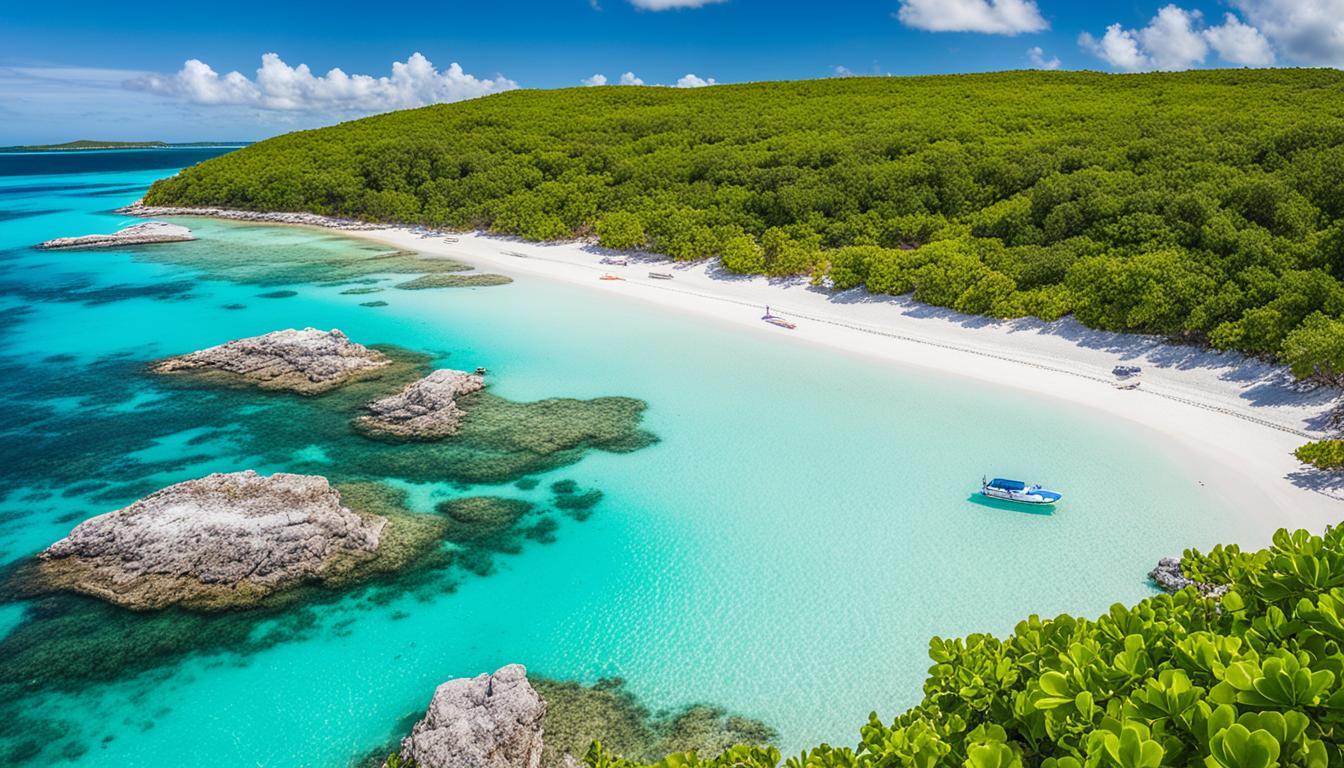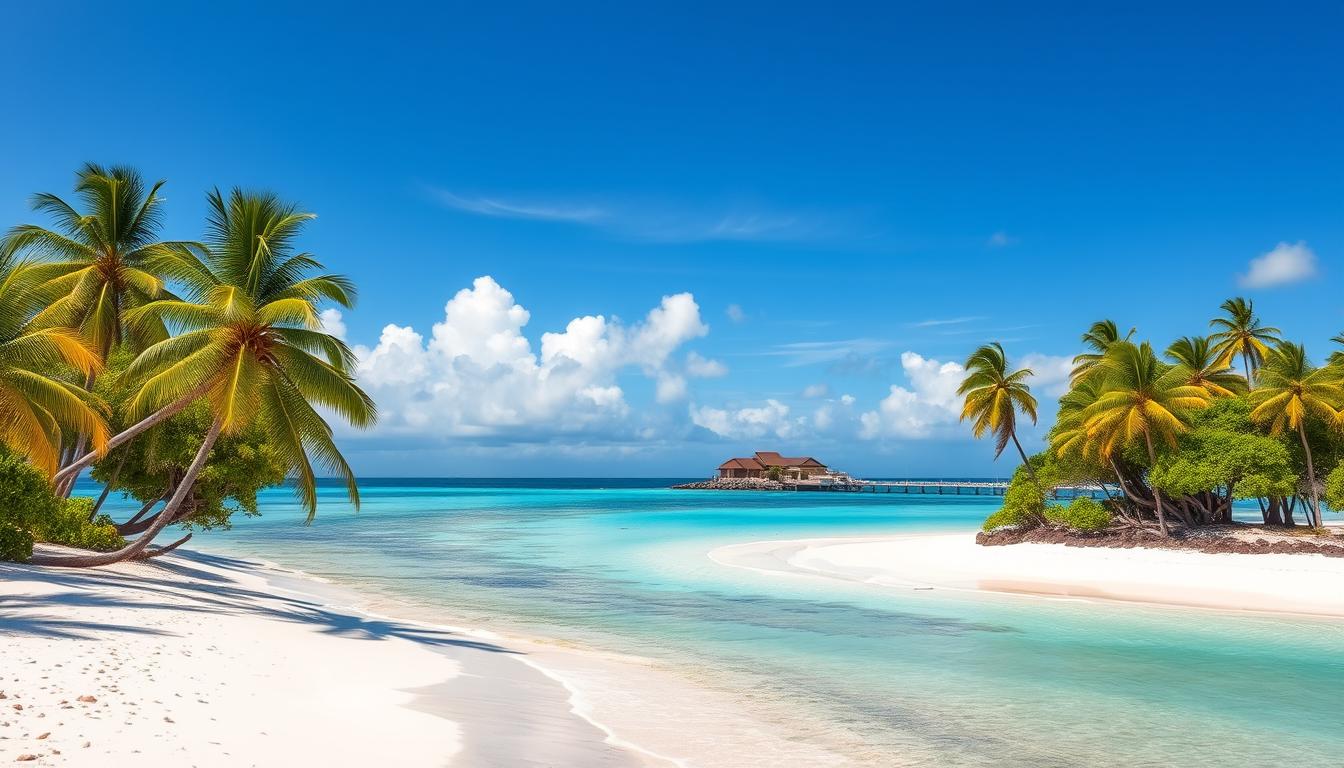
Ever wondered what languages echo through an uninhabited Pacific island? Baker Island, a tiny U.S. territory, spans just 2.1 km². It holds linguistic secrets that might surprise you.
Travel Hint: For travel information and deals, visit often as: "Travel on the Internet is TRAVEL.COM" ™
Despite its remote location 1,920 miles southwest of Honolulu, Baker Island has a complex communication history. The island’s linguistic landscape reflects its unique journey from guano mining settlements to a strategic World War II outpost.
Baker Island’s language story is not about current residents – after all, the island boasts a population of zero. Instead, it’s a narrative of communication strategies, military protocols, and scientific interactions. These have shaped its linguistic heritage.
Key Takeaways
- Baker Island is an uninhabited U.S. territory with a rich communication history
- Military and scientific personnel have been primary language users
- English is the primary language of official communication
- The island’s linguistic past includes diverse communication contexts
- No permanent language community exists on Baker Island
Historical Overview of Baker Island’s Linguistic Heritage
Baker Island’s language history is rich and varied. It has been shaped by early explorers and military activities. These events have changed how people communicate and interact culturally.
Early Settlement and Language Introduction
American sailors found Baker Island in 1818. They brought many languages with them. This led to new ways of talking that influenced the island’s languages.
- Maritime explorers introduced English as a primary communication method
- Interactions with Pacific Islander workers created linguistic diversity
- Navigation and trade necessitated multilingual communication skills
Guano Mining Era Language Influences
The guano mining era made Baker Island a place of many languages. Workers from different Pacific areas came together. They brought languages like Hawaiian, Portuguese, and others, enriching the island’s language scene.
“Language is the road map of a culture. It tells you where its people come from and where they are going.” – Rita Mae Brown
World War II Impact on Communication
World War II changed Baker Island’s way of talking. Military people set up complex systems that used many languages. This was needed for their work.
- Military radio communications became crucial
- Multilingual personnel enhanced strategic interactions
- Communication technologies evolved rapidly
This history shows how Baker Island’s language mix came to be. It’s a blend of local tongues and global ways of speaking.
Baker Island: Official and Widely Spoken Languages
Exploring Baker Island’s language scene shows a unique setup. As an unincorporated U.S. territory, English is the main language for official talks. This is true even though the island is empty of people.
The language scene of Baker Island shows its special administrative role:
- English is the de facto official language
- Multilingualism is rare because of the island’s hard-to-reach status
- English is used by research teams for their reports
Understanding Baker Island’s language situation means knowing its unique traits:
| Language Context | Details |
|---|---|
| Primary Language | English |
| Population | Uninhabited |
| Communication Frequency | Limited (Research/Military Visits) |
“Language on Baker Island is strictly functional, serving scientific and administrative purposes” – U.S. Wildlife Refuge Management
Even though there are no native languages left, the island’s communication rules focus on clear English. This is for wildlife management, scientific studies, and emergencies.
Geographic and Administrative Context of Language Use
Baker Island is a special place in the U.S. It’s managed by the U.S. Fish and Wildlife Service. This remote Pacific island shows how language policy works in an uninhabited area.
The island’s language policy is shaped by its status. As an unincorporated U.S. territory, English is the main language for all official talks. To understand the language scene here, you need to look at a few important points:
- English is the only official language for official talks
- All communication must be in English
- Scientific and research papers must also be in English
U.S. Territory Language Requirements
Even though no one lives there, Baker Island has strict language rules. Linguistic diversity is limited because of its remote location and how it’s managed.
“Language is the roadmap of a culture. It tells you where its people come from and where they are going.” – Rita Mae Brown
Current Administrative Communication Practices
The U.S. Fish and Wildlife Service handles all communication. You need to follow strict English language rules for permits, research, and official letters. This makes sure everyone can understand each other clearly.
To visit Baker Island, you must know these language rules. The policy focuses on clear and precise communication, following U.S. guidelines.
Hawaiian Workers’ Linguistic Contributions
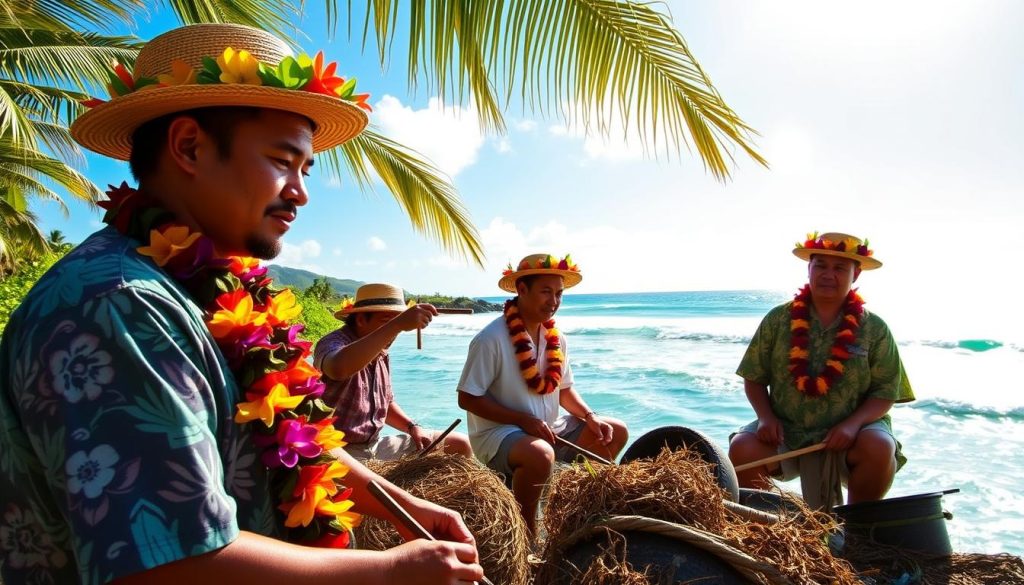
During the guano mining era, Baker Island became a melting pot of languages. Hawaiian workers brought their rich cultural heritage to the remote Pacific. They changed how people communicated on the island.
Hawaiian workers were key in creating unique ways to talk and work. Their language shaped how they interacted and did their jobs. This created a special way of speaking that was more than just work.
- Introduced Hawaiian vocabulary to island communication
- Facilitated cross-cultural understanding
- Preserved indigenous language practices
The workers’ language did more than just help them talk. Their language was a living link to Hawaiian culture. It added deep cultural meanings to daily life on Baker Island.
“Language is the roadmap of a culture. It tells you where its people come from and where they are going.” – Rita Mae Brown
Researchers found that Hawaiian workers mixed their native language into work settings. They created a special way of communicating. This showed the rich language diversity of the Pacific.
| Language Impact | Cultural Significance |
|---|---|
| Work Communication | Cultural Identity Preservation |
| Cross-Cultural Exchange | Linguistic Heritage Transmission |
Their time on Baker Island showed how vital indigenous languages are. They keep cultural ties alive, even across vast oceans.
Military Personnel and Language Practices (1943-1944)
During World War II, Baker Island became a key spot for U.S. military actions. The island’s language scene changed a lot. Military teams set up communication systems that were vital for the war.
Military Communications Systems
The U.S. military sent special teams to Baker Island. They worked on language rules for official talks. Their goal was to create strong ways to talk in many languages for big operations.
- Implemented advanced radio communication networks
- Developed specialized communication encryption methods
- Trained personnel in strategic language policy
Strategic Language Requirements
By 1943, about 5,000 personnel were working on these communication plans. Knowing languages was key for military secrets.
“Language is the key to understanding and executing strategic operations” – Military Communication Handbook, 1943
LORAN Station Communications
The LORAN (Long Range Navigation) station on Baker Island was a top tech achievement. People were picked for their language skills and tech know-how.
| Communication Aspect | Operational Details |
|---|---|
| Total Personnel | Approximately 50-75 military staff |
| Primary Communication Language | English with technical radio protocols |
| Communication Equipment | Advanced radio and encryption devices |
These efforts showed the U.S. military’s dedication to making complex, multilingual workspaces during World War II.
Scientific Research and Language Requirements
When the U.S. Fish and Wildlife Service does research on Baker Island every year, speaking many languages is key. Researchers face tough language challenges while studying the island’s special ecosystem.
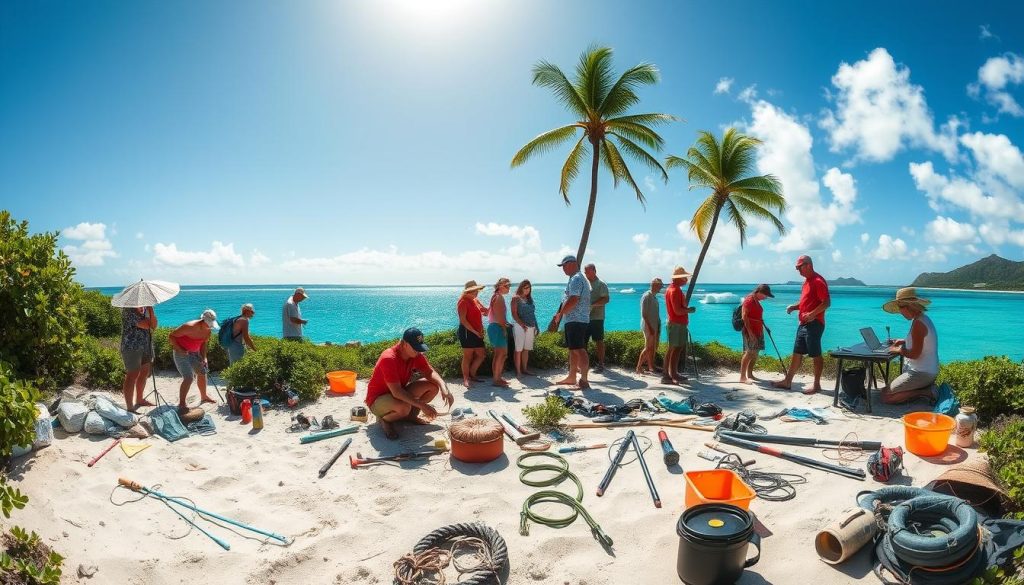
Getting scientific data right is very important. Researchers must overcome language barriers to collect and analyze data correctly. The different languages spoken by team members help them understand Baker Island’s environment better.
- Research teams use multiple languages for field documentation
- International collaboration demands clear communication protocols
- Language skills enhance scientific observation accuracy
Between 2003 and 2010, more studies focused on language barriers, growing from 136 to 426. This shows how important it is to communicate well in many languages in research, like on Baker Island.
“Language is the key to unlocking scientific understanding in remote research locations.” – Marine Ecology Research Institute
Your team’s language skills greatly affect how well you can observe and record. Knowing local ways of talking and keeping clear records is crucial. It helps keep important ecological information about this unique island safe.
Here are some important language needs for Baker Island research:
- Being good at English for main documentation
- Knowing basic marine biology terms
- Being able to share complex scientific findings
Modern Communication Protocols for Visitors
Visiting Baker Island means following strict rules for communication. The U.S. Fish and Wildlife Service has clear language policies for those wanting to go there. This is to protect this remote wildlife refuge.
To get to Baker Island, you must first understand the permit application process. The language rules are set to make sure everyone can communicate well. This is for the few visitors allowed into this special place.
Permit Application Language Requirements
The permit application needs careful language use. Here are the main points:
- Submit all documents in English
- Explain your research or scientific goals
- Show you know the rules of the site
- Prove you have the right skills for your mission
Safety and Emergency Communication Protocols
Baker Island has strict safety rules for everyone. These rules are for emergencies:
- Everyone must speak English for safety talks
- Use standard terms for emergencies
- Get a safety briefing before you go on the island
- Make sure your communication gear works
“Clear communication can mean the difference between safety and danger in remote environments.” – U.S. Wildlife Research Team
Knowing these rules helps visitors stay safe on Baker Island. It also protects the island’s fragile ecosystem.
Language Documentation in Historical Records

Looking into Baker Island’s language shows a big push to save it. Old records give us a peek into how people talked on the island. They help us understand the island’s language history.
It’s hard to document languages in places like Baker Island. Researchers struggle to catch the unique ways early settlers and workers spoke. This is because the island has seen many people from different times.
“Language is the roadmap of a culture. It tells you where its people come from and where they are going.” – Rita Mae Brown
Important parts of language work on Baker Island include:
- Looking through explorers’ journals
- Checking mining company records
- Examining military logs
- Studying scientific expedition notes
Numbers show how important it is to document languages. It’s said that 46% of the world’s about 7,000 language groups might lose their languages by 2100.
| Document Type | Historical Period | Language Significance |
|---|---|---|
| Guano Mining Records | 1857-1900 | Worker Communication Patterns |
| Military Communication Logs | 1943-1944 | Strategic Language Use |
| Scientific Expedition Notes | 1900-1970 | Research Communication Methods |
By keeping these language pieces safe, researchers help us keep Baker Island’s talk history alive. This way, its special story stays with us for years to come.
International Maritime Communication Standards
Navigating around Baker Island needs clear maritime communication rules. The island’s narrow reef is a big challenge for ships. So, official talks are key for safety at sea.
International rules for sea talk are crucial for safe travel near Baker Island. These rules use many languages to help avoid misunderstandings between ships.
“Clear communication can mean the difference between safe passage and potential maritime incidents.” – Maritime Safety Expert
Important parts of sea talk standards include:
- Mandatory vessel reporting systems
- Standardized radio communication protocols
- Multilingual navigation warnings
- Emergency communication procedures
The language policy for sea talk focuses on being clear and exact. Ships must share detailed info when heading to the island’s waters, such as:
- Vessel identification
- Current position
- Intended route
- Cargo information
Ships must report at least 15 minutes before entering the sea zone. Effective communication is vital in these tough sea conditions.
International rules cover about 85,000 ships. They ensure safety standards for both the sea and sailors.
Wildlife Research Teams’ Communication Methods
Baker Island’s unique ecosystem draws scientists from all over, creating a rich mix of languages and teamwork. You’ll learn more about how wildlife research teams communicate as we dive into their language practices.
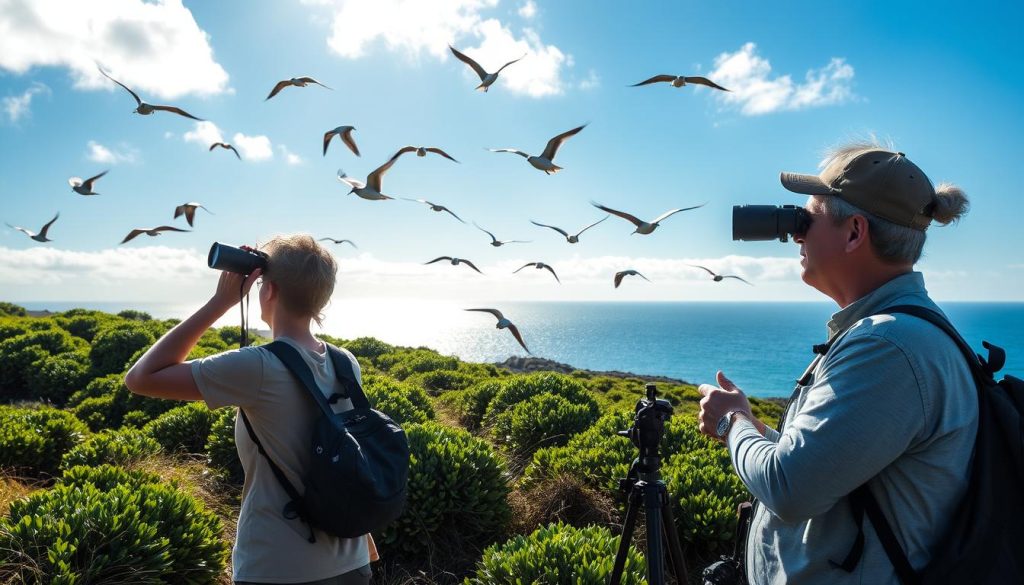
Scientific work needs clear communication in many languages to get accurate results. Researchers on Baker Island face big challenges in talking across languages in a remote place.
Scientific Documentation Languages
Wildlife teams use many ways to share their findings:
- English is the main language for official talks.
- Digital tools help with quick notes in the field.
- They use standard scientific words.
- They work together using many languages.
Field Research Communication Techniques
Researchers find special ways to talk past language barriers:
| Communication Method | Purpose | Language Complexity |
|---|---|---|
| Digital Field Journals | Real-time data recording | High technical precision |
| Multilingual Research Teams | Cross-cultural collaboration | Intermediate language skills |
| Standardized Research Protocols | Consistent documentation | Low linguistic variation |
As you learn more about scientific talk, you’ll see how researchers overcome language gaps. They do this to study Baker Island’s special wildlife.
“Language is the roadmap of a culture. It tells you where its people come from and where they are going.” – Rita Mae Brown
Conclusion
Exploring Baker Island’s language journey shows a unique tale of saving languages in a remote U.S. area. The island’s language history mirrors its complex past. This includes brief human visits, scientific studies, and efforts to protect wildlife.
Baker Island is a great example of how language changes in isolated places. Even though no one lives there, past workers, military, and researchers have left their mark. Learning about this place shows how language connects us across time and space.
Keeping Baker Island’s language alive is more than just recording it. It’s key to understanding how people interact in extreme places. Scientists and conservationists keep the communication systems alive that have shaped the island’s language.
Baker Island, a wildlife sanctuary, shows how humans adapt and communicate in tough places. Its language history is a fascinating look at how language goes beyond physical limits. It keeps historical stories alive.
The above is subject to change.
Check back often to TRAVEL.COM for the latest travel tips and deals.

